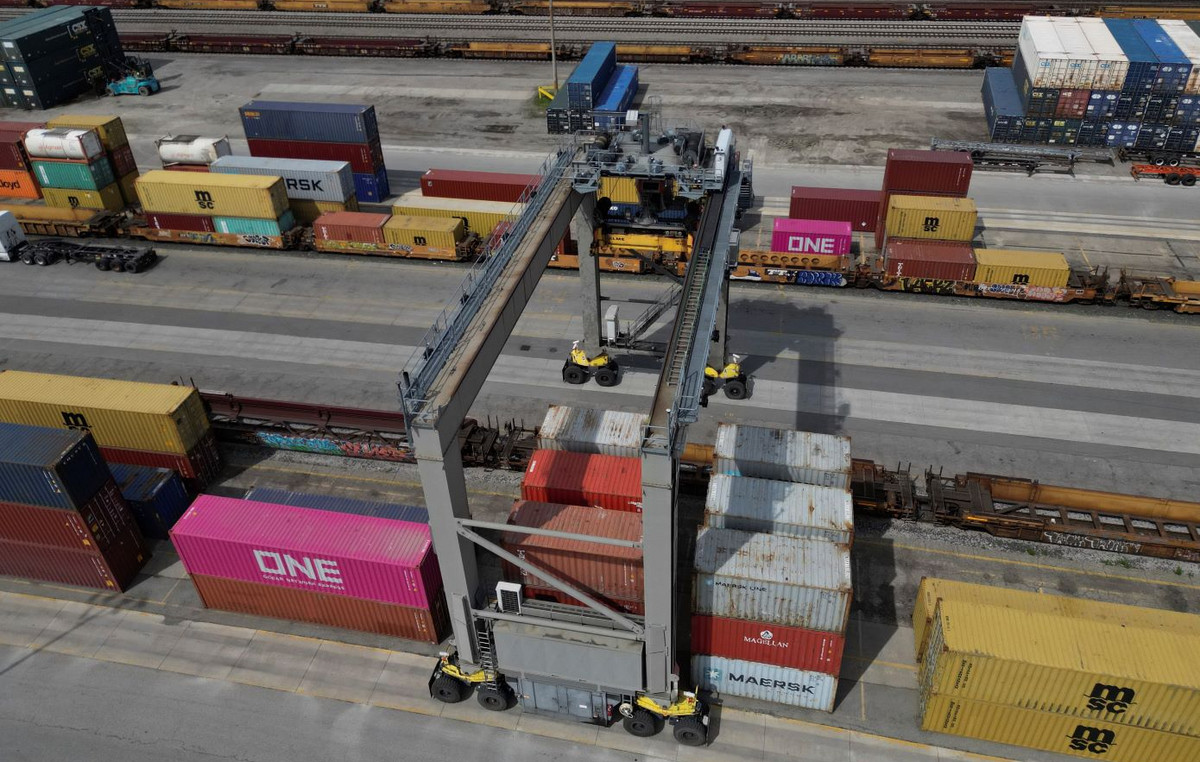LAST UPDATE: 22:38
The news of the first confirmed case of the Omicron mutant in the US brought a complete change of scenery on Wall Street, as it “deflated” the upward reaction that was attempted in the first meeting of December and after the heavy losses on Tuesday.
The volatility is evident in the market as concerns about the new Omicron mutation remain in the foreground, while investors assimilate the new comments of the President of the Federal Reserve before Congress.
The market jumped strongly in December, with the Dow Jones temporarily gaining nearly 500 points higher and the S&P 500 and Nasdaq gaining more than 1.5%, with investors gaining momentum from earlier positive employment data. .
However, the indices then narrowed and finally “extinguished” their gains completely, as the latest from the pandemic front and the Omicron mutation continue to be problematic, with the climate being burdened by the comments of the President of the Federal Reserve, Jerome Powell, on the second day of its hearing by the Congressional Finance Committee.
The head of the Fed stressed that the risks of “persistent” high inflation have “clearly increased”, adding that in this context the monetary policy of the Federal Reserve will be adjusted.
“(Monetary policy) has adapted to this and will continue to adapt,” Powell told the commission, adding: “We have seen that inflation is more persistent. “We have seen that the factors that lead to rising inflation are more persistent.”
The market has received the central banker’s comment so far that the Fed will accelerate the tightening of its monetary policy, as it did yesterday, during its first day of hearing by the Congressional Committee, when it said that the forthcoming meeting of the Federal Reserve will be discussed. The acceleration of tapering, with an increase in the termination rate of the extraordinary asset purchase program, as a result of the strong economic growth but also the estimates that the inflation rally is expected to continue until the middle of 2022.
This development, at a time when uncertainty is evident due to the Omicron mutation, has sparked fears that the Federal Reserve has already decided to change its policy and pursue a less supportive approach to economic growth.
Thus, the key indicators lost their initial gains and are now moving in negative territory. In particular, the Dow Jones industrial average lost 259 points or 0.75% and moved to 34,224.08 points, the broader S&P 500 lost 0.30% to 4,553.50 points, while the technology Nasdaq fell 0.99% to 15,384.20 units.
Technology bonds are also hit by the recovery in government bond yields, with the US 10-year yield climbing back to 1.5% after falling by 8 basis points on Tuesday to 1.45%, amid fears that the pandemic will undermine economic growth.
It is noted that yesterday the US market closed in November with strong losses, with the S&P 500 losing 1.90%, the industrial Dow dropping 652 points and the Nasdaq losing 1.55%, as the fear of lockdowns returned to the forefront. Moderna CEO Stephan Bancel warns that existing coronavirus vaccines may be less effective in treating the new Omicron mutation.
Earlier, the market tried to make up for yesterday’s losses by pushing data on the US economy. The latest employment data, which showed that US companies continued to add jobs at a healthy pace in November.
In particular, the private sector added another 534,000 jobs last month, up from 570,000 in October, according to a survey by the ADP Research Institute. Analysts’ average estimates in a Bloomberg poll showed an increase of 525,000 positions.
Investors, meanwhile, are trying to assimilate conflicting conclusions about the manufacturing sector that came from two different surveys published today in the US.
In particular, the Institute for Supply Management (ISM) survey showed an increase in manufacturing activity in November, with the relevant index climbing to 61.1 in the previous month from 60.8 in October. Analysts’ average estimates in a Reuters poll put the index at 61.0 points.
On the other hand, the IHS Markit industry survey showed a slowdown in activity, with the relevant PMI falling to an 11-month low amid weaker demand and material shortages.
In particular, the manufacturing PMI fell to 58.3 points in November from 58.4 points in October, lower than the preliminary measure of 59.1 points, according to IHS Markit. This is the lowest measurement since December 2020.
.
I am Sophia william, author of World Stock Market. I have a degree in journalism from the University of Missouri and I have worked as a reporter for several news websites. I have a passion for writing and informing people about the latest news and events happening in the world. I strive to be accurate and unbiased in my reporting, and I hope to provide readers with valuable information that they can use to make informed decisions.







